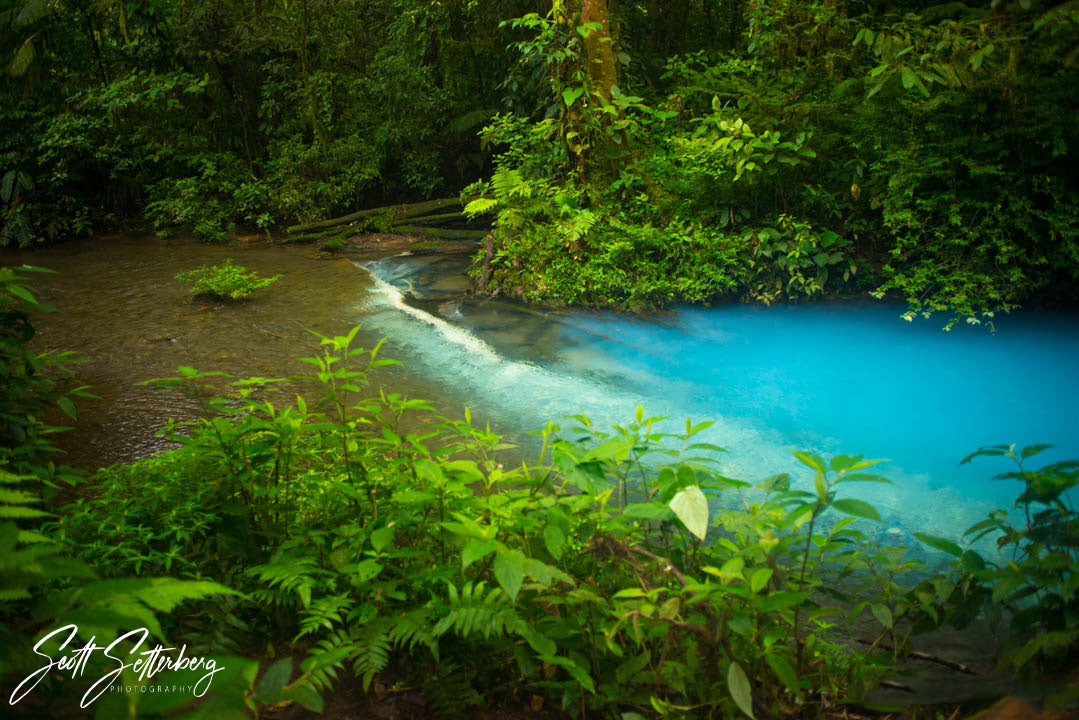The Mysterious Rio Celeste

In Costa Rica's Northern Highlands, Tenorio Volcano National Park is home to the magnificent turquoise water of Rio Celeste. Ancient legend has it that while painting the sky, the gods dipped their paintbrushes into the water of Rio Celeste, causing it to turn turquoise. In more modern times, it was thought that the color was created by a high concentration of mineral deposits in the water. In 2013, scientists discovered rocks on the river bottom covered with aluminosilicates - a combination of aluminum, silicon, and oxygen - that absorb all colors, except blue, present in sunlight. So the answer to the mystery of how the water gets its color is that reflected blue rays of sunlight create the stunning visual sensation.
 I first explored Rio Celeste in Costa Rica with a photographer friend and private tour guide in 2012. We started out from La Fortuna, traversed the rural countryside and passed though small pueblos of indigenous people, until we reached the main road to Rio Celeste. Back then, the main road was dirt and gravel, packed full of large rocks and potholes, and it took about forty minutes of extremely slow, defensive driving before we arrived at the park entrance. Fortunately the main road has since been paved, and it's now much easier to access the incredible site.
I first explored Rio Celeste in Costa Rica with a photographer friend and private tour guide in 2012. We started out from La Fortuna, traversed the rural countryside and passed though small pueblos of indigenous people, until we reached the main road to Rio Celeste. Back then, the main road was dirt and gravel, packed full of large rocks and potholes, and it took about forty minutes of extremely slow, defensive driving before we arrived at the park entrance. Fortunately the main road has since been paved, and it's now much easier to access the incredible site.

The hike to the spectacular rainforest waterfall is an easy 25-minute stroll through the jungle before reaching a staircase of 250 steps leading down to the viewing platform at the base of the falls. Swimming is not allowed in the pool below the falls, but the misty spray is refreshing nonetheless. Beyond one of the best waterfalls in Costa Rica, other interesting things to see at Rio Celeste are: bubbling hot springs along the river's edge; a beautiful lagoon called Poza Azul; and Los Teñideros - the demarcation line where two rivers merge together and the turquoise water begins.

Along with many species of birds and insects, other Costa Rica wildlife I've encountered at Rio Celeste include: a moss-covered, Three-toed Sloth; a large tropical rodent called an Agouti; Owl Butterflies, whose giant wings mimic the face of an owl for protection; and a bright green, venomous Eyelash Viper coiled up on a flat rock.
Rio Celeste is a sensational national treasure and you can explore and photograph it on select Costa Rica photography tours. Check out all the photo tour itineraries and dates, decide which tour works best for you, and book your spots today!
See you soon in Costa Rica! Pura Vida!

Scott Setterberg
Author